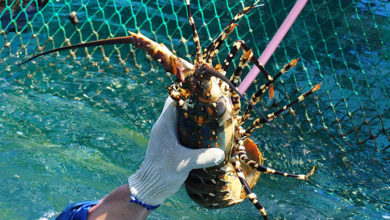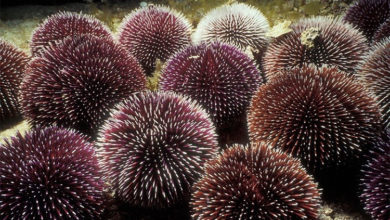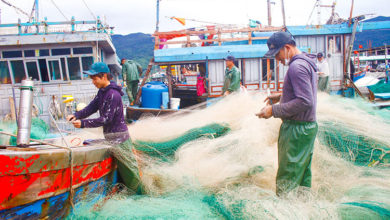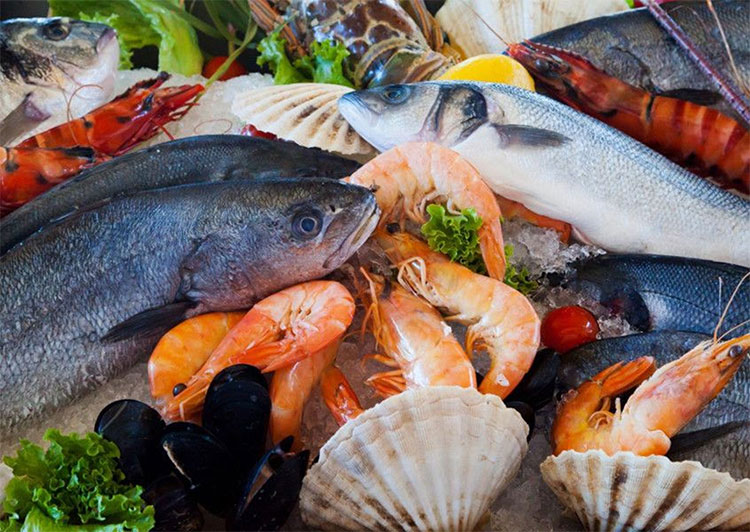Protein ingredients for fishmeal replacement in livestock and aqua feeds
The livestock and aqua feed industries continue to grow year-on-year, which has resulted in higher demand for protein ingredients. This is especially the case for brackish water and marine culture species that use high inclusion levels of fishmeal in diet formulas to meet the energy and protein requirements of the diet. Although the supply of fishmeal reaches 6.0 – 6.5 million metric tons each year (The benefits of fishmeal in aquaculture diets | The Fish Site), the supply of fishmeal is stagnant and isn’t expected to grow. Fishmeal is not able to keep up with animal production demand due to environmental pollution and over-catching capability that results in a limited fishmeal supply. In addition, the trends of requiring sustainable growth and environment protection to many industries, including livestock and aqua feeds that requires urgent innovation in developing the fishmeal alternatives. It is also a strategic and planned trend for livestock and aqua feeds in the coming years. So far, there has been a wide development of fishmeal alternatives; however, only innovative vegetable protein products, mainly originating from soy and corn, that have been commercialized such as corn pure-protein concentrates (Empyreal 75), fermented corn protein concentrates (MOTIV), fermented soy protein (from Taiwan and Korea) or enzyme hydrolyzed soy concentrates (HP300, Provisoy). Fishmeal alternatives from animals or bacteria (Insect meal & Novacq) have been not commercialized yet due to difficulties in technology consistency and cost to bring to scale. Fishmeal alternatives require special criteria such as high protein digestibility, attractant, and palatability; otherwise, we need to combine different fishmeal alternatives and attractants to secure animal performances in fishmeal replacement:
Nutrient requirements for fishmeal alternatives
- Protein quality
Protein needs to be of high-quality (minimum 60% protein, the best is higher than 65% and consists of similar fishmeal amino acids) and protein needs to be of high purity (high in protein but low in carbohydrates, fiber and ash) and must be highly digestibility (amino-acid digestibility need to be a minimum of 85%).
- Rich in peptides and bio-active peptides
Protein quality is not only amino acids and protein digestibility but also need to be rich in short peptides (peptides with size between 1,000 – 10,000 Da) and bio-active peptides (peptides with size < 1,000 Da). Peptides not only play a role as an attractant and palatability, but also in improving animal health and stress resistances. This is especially important for the bio-active peptides in enhancing animal health and antibacterial responses. According to a presentation in TARS 2017 (Aquatives), marine protein ingredients such as fishmeal, krill meal or squid meal are rich in energy, protein and has excellent digestibility. These marine ingredients are also rich in fat and fatty acids, cholesterol, and minerals and vitamins, low in carbohydrates, especially high in soluble protein (5-10% peptides with size ranging between 1,000 – 10,000 Da) and bio-active peptides (2% – 7% peptide with size < 1,000 Da) and high-quality protein accompany with high in peptides and peptide diversify. MOTIV, a fermented corn protein concentrates, also consists of 5.33% soluble protein (peptides ranging between 1,000 – 10,000 Da) and 3.08% bioactive-peptides (peptides < 1,000 Da).
- Fat and fat quality
Most of carnivorous species or fist-stages of most animal species prefer high-protein diets, using high fishmeal inclusion in the formula. They also require high special fatty acids (EPA, DHA, and ARA) while vegetable protein consists more in shorter fatty acids (Linoleic and Linolenic acids). Therefore, we need to combine high-quality fish oil rich in EPA, DHA and ARA with corn protein concentrates, fermented corn protein concentrates, and/or fermented soy, hydrolyzed soy protein concentrates in replacing fishmeal for shrimp, marine fish, or other carnivorous fish species.
- Fiber and carbohydrates
It is very important to have low fiber and low carbohydrates in fishmeal alternatives as majority carnivorous species, which require high-fish meal diets, also has a low requirement for fiber and carbohydrates. If fishmeal alternatives consist of high fiber and/or carbohydrates, it will limit the formulation to optimize the fiber and carbohydrates for nutrition requirements and limiting the formula room to take functional starch from wheat and/or tapioca to secure the pellet binding and water stability. One of the limitations of non-pure protein like Corn Gluten Meal is still consisting of high starch (approximately 20%) together with variation in mycotoxins while purity corn protein concentrates (Empyreal 75) has very low starch (maximum 1%) and safety and low mycotoxins. Similarly, different soy proteins, including fermented soy and hydrolyzed soy protein concentrates are not very high in pure protein (still 23% carbohydrates in HP300 & 24.3% carbohydrates in Soytide) together with antinutrients has limited the inclusion of these soy proteins in replacing fishmeal. Carbohydrates in Empyreal 75 is around 5.3% and in MOTIV is only 1.7% and these corn protein concentrates can replace fishmeal at higher inclusion (5% – 30% for Empyreal 75 or 5% to 20% for MOTIV to replace fishmeal in animal diets).
- Minerals
Fishmeal is rich in minerals & vitamins, especially calcium and phosphorous while vegetable proteins are typically low in calcium and phosphorous, and also have reduced bioavailability due to phytates. However, the fermented vegetable proteins improve digestibility and release phytates to make the phosphorous more available, especially the proteins fermented by Lactobacillus sp. (MOTIV has phosphorous reaching digestibility of 94.8% in piglet).
- Cholesterol
Fishmeal and marine proteins (such as krill meal or squid meal) are not only rich in cholesterol but also high-quality cholesterol for crustaceans like shrimp and crab. We need to use marine cholesterol to balance the diet formulation once replacing fishmeal to secure the expected shrimp performances.
- Antinutrients
Although soybean meal is cheap on a per unit of protein basis and an excellent source of amino acids, it is high in antinutrients and carbohydrates, including fermented soy and hydrolyzed soy. These are limiting factors for high-inclusion fishmeal replacement, especially marine fish diets. High antinutrients and carbohydrates is the reason for maximum 5% inclusion of soy products when using in the formulas of the salmon feeds. Soybean meal is suitable for freshwater fish, but need to be controlled to a maximum of 35% in the formula (although there has been up to 40% in many diet formulas of several species) while in shrimp we should control maximum inclusion of soy proteins to 20% in the intensive shrimp diets (although the formula goes up 30% in practical for least-cost formulation).
- Mycotoxins
Big variation of mycotoxins and high starch (20%) is limiting factor to use corn gluten meal as fishmeal alternatives as it does not produce good animal performances once using corn gluten meal to replace fishmeal while Empyreal 75 is really pure protein with maximum 1% starch and low and safe level of mycotoxins; therefore, Empyreal 75 can be used 5% to 30% to replace fishmeal with remaining good performances for animals.

Attractant and Palatability in fishmeal replacement
Attractant and palatability are the essential factors in marine protein ingredients like fishmeal, squid meal and krill meal. Vegetable proteins treated with enzymes or fermented with beneficial bacteria and rich in glutamic acid are still good for palatability; however, attractant is still less than that of fishmeal. Therefore, once you are using vegetable proteins to replace fishmeal you still need to add attractant raw-materials or nutrients. Attractant raw-materials can be used for marine fish and shrimp such as squid meal, krill meal or hydrolyzed fishmeal (2% – 5%) or squid liver powder (minimum 7%) while fish soluble or shrimp soluble or hydrolyzed poultry meal can be used for freshwater fish species (1.5% – 3.5%).
The current commercialized fishmeal alternatives
Today, proteins used for replacing fishmeal at commercial scale in Vietnam are highly pure corn protein concentrates (Empyreal 75), fermented soy (Soytide) and hydrolyzed soy protein concentrates (HP300/Provisoy) and used for piglet and fingerling fish. Cargill US recently has launched a fermented bioactive corn protein concentrates which is designed specifically for shrimp feeds, namely MOTIV. MOTIV is fermented by an innovative and unique technology to create more peptide availability (5.33% peptides with size between 1,000 – 10,000 Da), and especially rich in biopeptides (3.08% peptides with size < 1,000 Da) to target to enhancing shrimp health as it’s roles of biopeptides in important health functions such as, 1) Blood cholesterol control; 2) Improve cardiovascular system; 3) Scavenge free radical formation; 4) Immunomodulatory; 5) Improve digestion. In addition, some of biopeptides act as antibacterial components as a promising alternative to antibiotics. MOTIV consists of high organic acid (7.2% in the product is lactic acid) that improve gut health and activate gut enzymes to improve digestion and nutrient uptakes; therefore, it is also good product for piglet gut health. MOTIV also consists of high carotenoids (285 ppm xanthophyll) that is very strong antioxidant and helping the animals with stress resistances together with highly palatable and healthy amino acids (15.8% glutamic acid, 10.3% Leucine and 1.59% Methionine). MOTIV has NO antinutrients to negatively impact animal gut health (Lectines, Glycinin, β-Conglycinin, Oligosaccharides). Therefore, although MOTIV is designed specifically for shrimp, it is also good product for young animals (piglet, poultry starters, and fish fingerlings) or for highly intensive husbandry practices/systems.
Comparison among common fishmeal alternatives

Sources: Brochure & Specs of the products
(+) : Detectable at different levels
(–) : Non-detectable
N/A: non-applicable (or no data)
Although there are good amino acid profiles of soy protein ingredient alternatives, they still consist of high carbohydrates and antinutrients; therefore, it is critical to control the maximum inclusion of total soy products used in animal diets to avoid the negative impacts on animal gut health. This also helps formulators easily control the maximum level of carbohydrates/starch that can potentially negative impact on animal growth and feed conversion rates of the carnivorous animals and in young stages of all animals. In addition, using pure protein ingredients with less non-protein components (fiber and carbohydrates/starch) will also help formulators by providing space in the diet to get functional starch from wheat and/or tapioca to secure the binding, water stability and control fines in final pellet products. It is also excellent to combine soy and corn protein products to balance amino acids as some amino acids are low in soy protein but high in corn protein, vice versa. Thus, it is very good to combine MOTIV with soy protein ingredients to complement each other for both nutrient balancing and eliminating the negative impacts from high carbohydrates and antinutrients of the soy products.
Nguyen Duy Hoa, PhD.
Global Technical Director Empyreal products, Cargill Inc.






